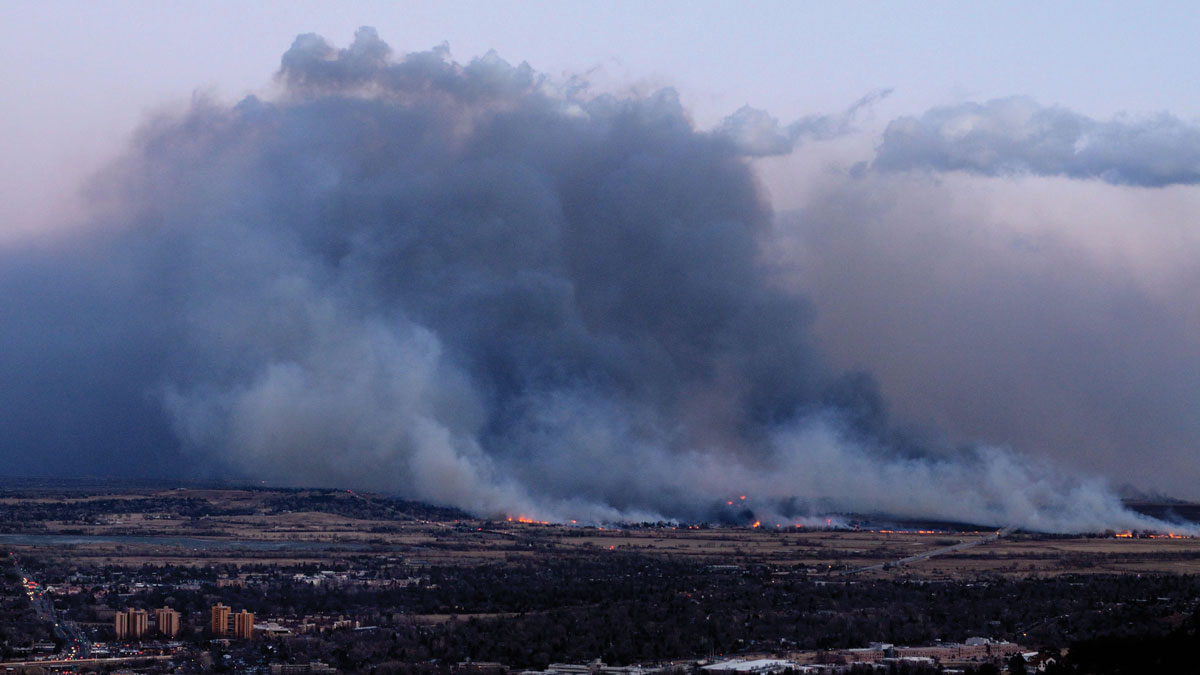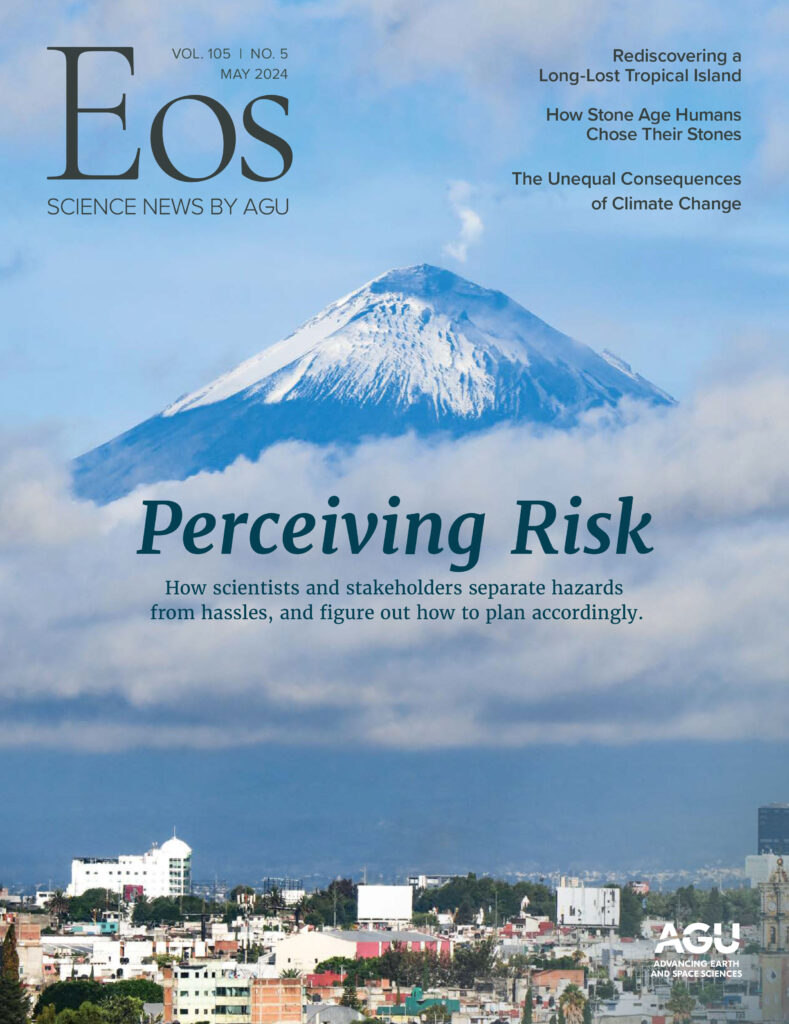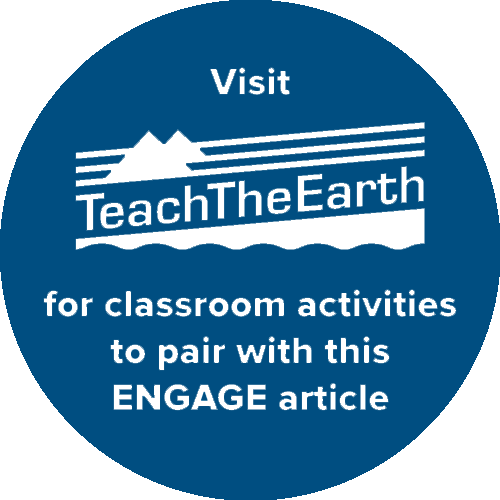On 30 December 2021, University of Colorado Boulder (CU Boulder) glaciologist Waleed Abdalati drove from the suburbs into the city to meet one of his graduate students. As he remembers it now, the weather was foreboding: Unusually strong winds ripped through the plains abutting Colorado’s Front Range. The sky was darker than it should have been. “The air was just different,” he said.
Shortly into his meeting, Abdalati’s teenage daughter sent him a text warning that the town of Superior—not far from their house in Louisville—was under an evacuation notice due to a fire. But six lanes of highway separated Abdalati’s home from Superior. Surely the fire couldn’t jump a highway like that, he thought.
Minutes later, another text from his daughter arrived, urging him to take the threat more seriously. He jumped into his car and raced home. By the time he arrived at his neighborhood, police were already blocking off the roads. Abdalati parked in a nearby condominium lot and sprinted a few hundred yards, past the police barrier, to his home, where his daughter and dog were waiting.
His daughter was upset; his dog was coughing. They ran back to the car to evacuate. Later, safe at a friend’s house, Abdalati looked over a federal map of active wildfires.“It was clear that our neighborhood was not in good shape,” he said.
In Superior, CU Boulder atmospheric chemist Christine Wiedinmyer was at home, working furiously on a grant proposal in her downstairs office when her phone started pinging with text messages from a colleague. Authorities had evacuated the town’s Costco, a short distance from Wiedinmyer’s home. She peeked outside to take a look.
“The wind was just howling,” she said. “And I could see this fire plume coming up behind my house. It was crazy.” Still, Wiedinmyer felt a sense of security: She lived in the middle of a subdivision, not a forest. She headed back downstairs to work on the proposal.
Not long after that, though, an emergency text prompted Wiedinmyer and her 16-year-old son to evacuate. She grabbed her work computer, a change of clothes, car titles, and birth certificates, and they piled into the car. Looking out as they drove, they could see the extent of the destruction: Hundreds of homes had already burned.
Wiedinmyer and her son sat through an hour and a half of nerve-racking traffic, eventually arriving at her brother’s house in Denver. There, they turned on the local news. “I watched three homes of people I knew just burn down on live television,” she said. “It was horrifying.” She went to sleep not knowing whether her house would be there in the morning.
Many scientists became go-to resources and quickly assembled to answer lingering questions about the effects of urban fires.
Abdalati, Wiedinmyer, and thousands of others in the Boulder area were facing the wrath of the Marshall Fire, a blaze that would burn 2,400 hectares (6,000 acres), destroy more than 1,000 homes in 12 hours, and cause the deaths of two people.
The fire disrupted the scientific community at CU Boulder and its 950-person environmental research center, the Cooperative Institute for Research in Environmental Sciences, or CIRES, of which Abdalati is director. Finding a void in reputable information available to their concerned neighbors, many of the scientists became go-to resources and quickly assembled to answer lingering questions about the effects of urban fires.
Fanning the Flames
Colleen Reid, a geographer at CU Boulder, was visiting family on the East Coast on the day of the fire. Her home, 3 kilometers (2 miles) north of the fire, was not affected. As she drove from one relative’s house to another back East, she fielded messages from friends who were being evacuated in Boulder.
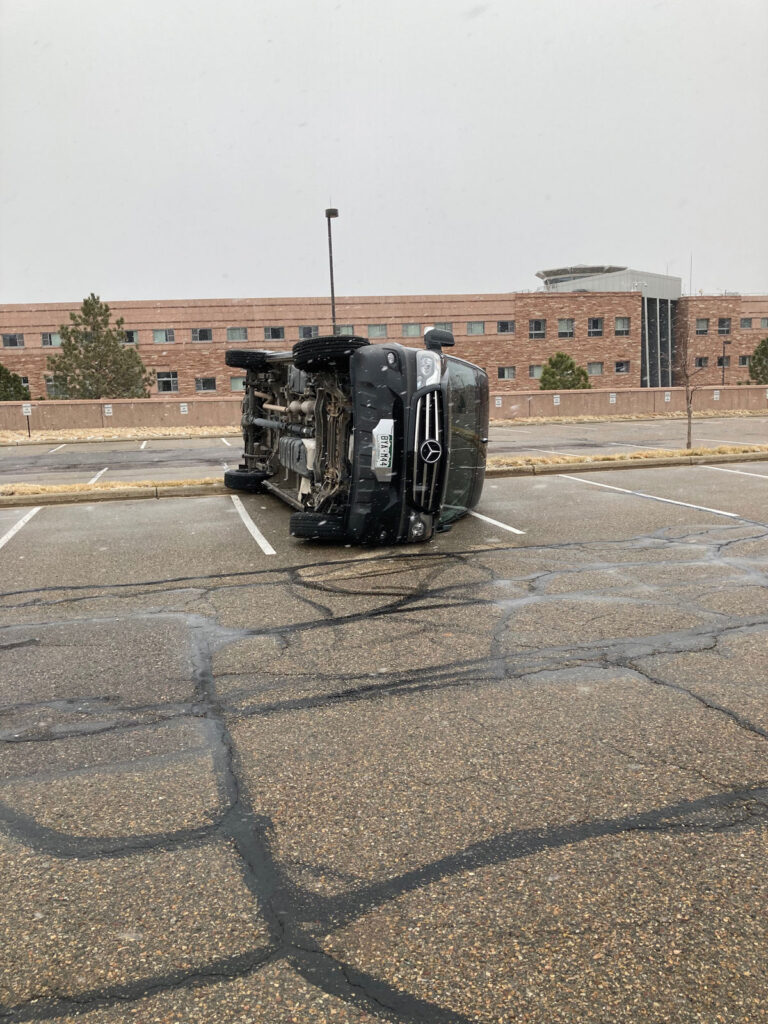
The fire took everyone by surprise, she said. Most fires that happen in the Front Range start west of Boulder in the foothills, pouring smoke into the city and farther east.
But unusual conditions that year disrupted that pattern, she said.
The spring had been very wet, spurring lots of plant growth. The following summer and fall, though, were unusually dry, turning all that extra vegetation into fuel. Until the day after the fire, there hadn’t been snow cover in the area, either, which would have slowed the flames.
In addition, a record-breaking windstorm had started the morning of the fire. Winds picked up as the day went on; gusts of up to 185 kilometers (115 miles) per hour blasted across the landscape. The windstorm and vegetation conditions set the stage for two sparks—one from a power line and another from a trash fire—to start the blaze.
Shortly after 2:00 p.m., strong winds carried the fire across the Denver–Boulder Turnpike, the six-lane highway separating Abdalati’s neighborhood from the fire’s origins. Winds didn’t weaken until 7:30 that evening.
Confusion in the Community

The morning after the fire, Abdalati returned to his neighborhood to find his entire block obliterated except for two houses: a neighbor’s and his own.
“It was hard to see,” he said. “I was watching neighbors come home to find everything destroyed. It was just heartbreaking.”
Abdalati’s house smelled strongly of smoke, and it badly needed remediation. He and his family moved into a friend’s empty condo nearby. It was a frustrating time for the family, who suddenly had no belongings. “You just get really antsy to go home,” he said.
But moving back home came with its own anxieties. “You start to wonder, How bad is the air? How bad is the soil? What are we really dealing with here?” Abdalati said. At the recommendation of the insurance company, the family replaced all the cloth furniture and carpeting. It was more than 4 months until the remodel was complete.
Wiedinmyer’s home also smelled of smoke when she and her son returned. Black ash coated the interior windowsills and doorways. She did most of the cleanup herself, changing the air filters in her HVAC (heating, ventilation, and air-conditioning) system, wiping down all surfaces with soapy water, airing out the house for days, and vacuuming upholstered furniture.
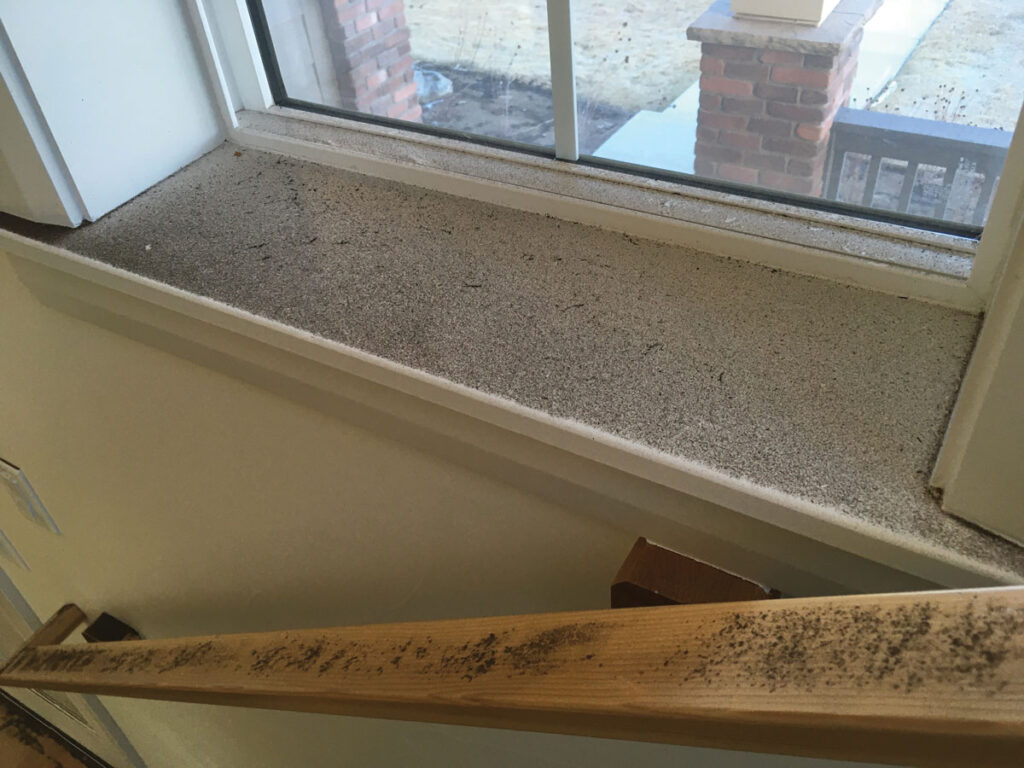
Alongside gratitude that her home was still standing, Wiedinmyer was frustrated at the many professional cleaning companies that descended upon the neighborhood offering various services not necessarily backed by science. “They were scaring people,” she said.
As an atmospheric chemist, Wiedinmyer was able to test the air quality of neighbors’ homes. She remembered measuring air quality inside a house that had been heavily affected by smoke when a cleaning company arrived. To Wiedinmyer’s surprise, the cleaners, working without any personal protective equipment, fired up a dust vacuum. “That just sweeps up [dust] and pours it into the air,” she said.
Cleaners were also providing air quality testing services using opaque methods and offering opaque results. “It was really hard to get value out of the data collected or really understand how meaningful they were,” she said.
Facing muddled recommendations from cleaning and insurance companies, Wiedinmyer’s neighbors had plenty of questions. “I had friends within a day asking, What are we smelling? Is this safe? What’s in our houses? You’re the scientist, you’re the air quality person,” she said. “I was like, You know, I don’t know.”
Wiedinmyer remembered calls with neighbors in which she described her own cleaning protocol and explained the possible risks and unknowns—of which, she realized, there were many.
Studying the air quality impacts of fires requires having a good idea of the materials that burned. With wildland fires, that’s relatively easy, as most of the burned material is vegetation. But in this urban fire, almost anything could have burned, releasing an array of unknown chemicals.
The peak temperature of the fire was nearly 1,400°C (2,500°F), so everything, including the frames and batteries of cars, burned. In a fire, burned materials release metals, molecules called polycyclic aromatic hydrocarbons (PAHs), and volatile organic compounds (VOCs), some of which are carcinogenic.Urban structures release more PAHs than vegetation does, and research shows that levels of PAHs after fires are higher indoors than outdoors.
“You can only imagine all the toxics that are around,” Wiedinmyer said.
And withthousandsof chemicals possibly burned in the Marshall Fire, scientists were far from fully understanding the air quality impacts. It was challenging, Wiedinmyer said, to act as a resource for neighbors when the science itself was so lacking. “I appreciated being able to have more information than others could get, but there were a lot of unknowns,” she said.
Scientists Step Up
Joost de Gouw, an atmospheric chemist at CIRES, also remembered the day of the Marshall Fire starting with foreboding winds. He returned home early from a walk with his dog because he didn’t feel safe in the record-breaking gusts. The winds, luckily, were blowing the fire away from de Gouw’s home.
He was never evacuated but spent the day glued to the news and watching as gusts toppled his fence and tree branches flew through the air. He could see the fire raging from his window.
“Here we were with all this expertise—I felt an obligation to our community to collect information and data that will be helpful to people.”
“It was very traumatic for our community,” he said.
In the days after the fire, de Gouw joined Wiedinmyer, Reid, and other CU Boulder and CIRES air quality and health scientists in an email chain, sharing resources on wildfires, air quality, and safety. That email chain turned into a Google Doc, which was shared on the CIRES website. When approached with questions, the scientists could point their neighbors to this crowdsourced page.
“Here we were with all this expertise—I felt an obligation to our community to collect information and data that would be helpful to people,” Wiedinmyer said. But the science on indoor air quality impacts was still frustratingly incomplete.
De Gouw realized that the fire offered an opportunity to begin filling some of the gaps in scientific knowledge of urban fires. That gap is twofold, he said: “First, what chemicals do you get when you burn stuff? And second, what are the health effects of those chemicals?”
At first, he wondered whether doing research in the wake of such a disaster was right. He worried that adding a team of researchers to the chaos would compound the stress faced by the suffering community. But after realizing people had questions that he knew CIRES scientists could answer, his thinking shifted, and he got to work.

De Gouw and a team of researchers placed low-cost air quality sensors in 12 homes that had been affected by smoke and ash. In one of the most heavily affected homes in Superior, they placed a higher-resolution instrument, a mass spectrometer that could measure the concentrations of indoor gases, including VOCs, as well as another sensor that measured particulate matter in the air. The instruments collected data for 5 weeks.
The team “jumped right on it and just sort of thought, We’ll figure out how to pay for this later,” Abdalati said. As director, he was proud to see how CIRES researchers mobilized quickly to serve their community, even as some of them were dealing with the aftermath of the fire themselves.
A local mass spectrometer manufacturer, Tofwerk, loaned the team a smaller mass spectrometer that could be wheeled from house to house to make measurements. Residents watched in real time as the data on the air in their homes came in.
It wasn’t hard to find research sites; more community members offered up their homes than de Gouw’s team had the resources to test.
Abdalati’s home was one of those instrumented. He remembered watching a graph in real time as de Gouw measured concentrations of benzene, a cancer-causing VOC that results from burning urban materials. Standing outside the house, de Gouw slid the benzene sensor through the window. Immediately, the graph shot up. “Clearly, we were way over safe levels,” Abdalati said.
As a scientist in people’s homes, de Gouw saw the aftermath of rapid evacuations and listened to scores of stories about the day of the fire. Some of them were harrowing, of people rushing through burning neighborhoods to save children or pets. Residents spoke of the trauma of continuing to live in neighborhoods that were now destroyed. “Some homes, if you look out the front door, all you’d see is destruction,” de Gouw said.
“These people had questions, and it was hard to get someone to talk to. And then suddenly we were there, and they could tell their story.”
Disaster response was an aspect of research de Gouw hadn’t dealt with before and found hard to navigate. But the response from residents was entirely positive. De Gouw realized that the work his team was doing was meaningful both scientifically and emotionally, and it had therapeutic value.
“These people had questions, and it was hard to get someone to talk to. And then suddenly we were there, and they could tell their story,” he said. “That felt good.”
The data showed that most air pollutants dissipated after about 6 weeks. However, VOCs—more than 500 types of which were present in affected homes that weren’t detected in outdoor air—remained in the smoke-affected homes for several additional weeks. That’s much longer than expected, according to de Gouw.
The team also found that the professional cleaning services consulted didn’t sufficiently fix air quality problems and that indoor cleaning actually increased the concentration of harmful particles in the air by resuspending ash and soot. The scientists are currently conducting a new laboratory experiment in which they’re burning common household goods and measuring the chemicals emitted; they hope the results will further identify which chemicals may be present after urban fires like the one that struck Boulder.
Reid is studying the long-term health effects associated with the fire via a multiyear survey of affected residents. Some people, she said, have reported developing rashes when they enter their homes or persistent headaches that subside only when they’re away. Symptoms vary on the basis of people’s sensitivities and the location of their homes, she said.
She and her colleagues still don’t have enough evidence to draw conclusions about the extent of the health effects in the community.
Reid said that the fire opened her eyes to the gaps that exist in scientists’ knowledge of indoor air quality after urban fires, especially the health impacts of VOCs. “We have not been paying enough attention,” she said.
Climate Change Hits Home
The fire and its aftermath imparted a new sense of community accountability in the scientists. For Abdalati, the fire was the first time he had lived through a climate change–related disaster like those he teaches about.
“It’s one thing to talk about climate change in an academic sense,” he said. “It’s very different to live it.”
As global temperatures climb, fire frequency and intensity are on the rise—as is the number of people affected by fires. “My experience is just one that many will have,” Abdalati said. “We’re perturbing the system in ways that have really large ramifications.”
As more urban fires occur and more people face their effects, understanding the extent of the chemicals those fires release and the health impacts of those chemicals—as CU Boulder scientists are working to do—will become more and more important, Wiedinmyer said.
Increasingly common, urban fires will bring more scientists into closer contact with those affected by tragedy. When speaking with affected homeowners and renters, de Gouw and his team learned that patience, taking community members’ concerns seriously, and listening intently were key to building good research relationships.
They also learned that close contact with communities can make for powerful science. “This was really, for me, the first case where the science was so intimately involved with the community,” de Gouw said. “It definitely changed my perspective.”
De Gouw said he especially appreciated the shared desire of scientists and community members to thoroughly understand what was happening inside their homes—a common goal he hadn’t experienced in previous air quality research. Questions from affected community members guided the scientists’ research.
“If a scientist has information to benefit the community, I think there is an obligation to share it with the community. We’re in it together.”
As community members offer up interesting research questions, scientists must respond, said Wiedinmyer. The aftermath of the fire made her realize the importance of considering her audience and sharing information that community members can actually apply to their own lives. A community in distress probably doesn’t care about her wildfire modeling work, for example, she said. But she still holds expertise to answer questions related to the disaster at hand.
“How can I provide resources that are directly useful?” she asked.
Learning how to celebrate research successes and respect the tragic nature of the event was difficult too. De Gouw’s team, for example, won awards from Boulder County, the state of Colorado, and the Denver Museum of Nature and Science for the work they completed after the fire. When accepting the awards, de Gouw made sure to commemorate those who lost the most.
More than 2 years later, Wiedinmyer still gets calls and emails from community members with questions about the safety of their homes. Many residents on the Hawaiian island of Maui reached out to Wiedinmyer too, after urban fires devastated the city of Lahaina in August 2023. As a result, she and other CIRES scientists plan to update their collection of resources and create a manual for the next time a large urban fire happens.
“If a scientist has information to benefit the community, I think there is an obligation to share it with the community,” Abdalati said. “We’re in it together.”
—Grace van Deelen (@GVD__), Staff Writer
This news article is included in our ENGAGE resource for educators seeking science news for their classroom lessons. Browse all ENGAGE articles, and share with your fellow educators how you integrated the article into an activity in the comments section below.

